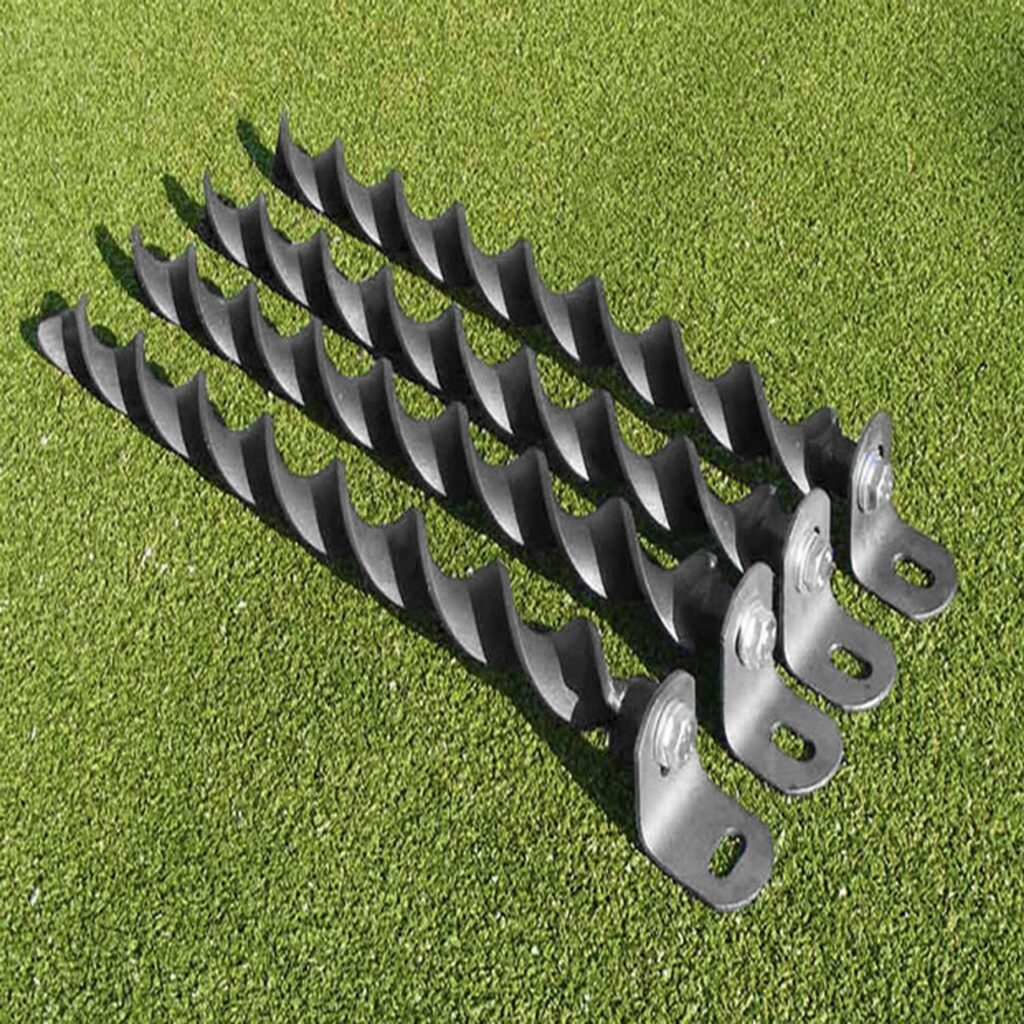
A ground anchor is a component used in the construction and stability of tall structures. It is also known as an anchor or a guy anchor. A ground anchor provides strong support and secure the transmission towers to the ground. This prevents them from toppling over. The ground anchor design helps to withstand the tensile forces applied to the structures. They are from materials and design that adapts to various types of terrains. Common soil conditions include rocky, sandy or soft soil conditions. Ground anchors are large steel or concrete structures buried in the ground at specific locations. They play a vital role in ensuring the safety and reliability of overhead transmission lines.
Components of a ground anchor
The components of a ground anchor include anchor rods, anchor heads and tensioning devices. They help to adjust the guy wire tension during installation and maintenance. The components vary depending on the specific application, soil conditions, environmental factors and load requirements. The main components are as discussed below.
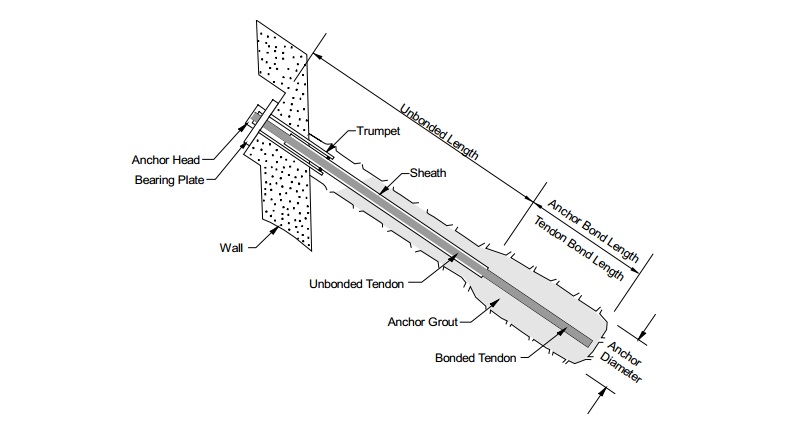
- Anchor rod – the anchor rod is the main part of the anchor buried in the ground to provide anchorage. It from high-strength materials and comes in various lengths and diameters.
- Anchor head – this is the top part of the anchor that remains above ground to connect the guy wire.
- Guy wire attachment hardware – the guy wire provides extra support to the transmission tower. It attaches to the anchor head using components like thimbles, shackles and turnbuckles.
- Guy wire – tis is a tensioned cable running from the anchor head to the transmission tower or pole. This helps to balance the tension and mechanical stresses exerted by the conductors on the tower.
- Deadman plate – this works in rocky or hard soil conditions to distribute the load over a larger area. This helps to increase stability and holding capacity.
- Guy wire tensioning devices – this includes devices such as turnbuckles to adjust the tension of the guy wire.
- Concrete anchor – a concrete anchor block works in conjunction with the anchor to increase stability in softer soils.
Types of ground anchors
Ground anchor have various types and designs to suit specific applications and ground conditions. The selection of the ground anchor depends on soil conditions, load requirements, installation method and project specifications. The selected type of ground anchor should ensure their effectiveness in providing stability and support. The following are the common types of guy anchors.
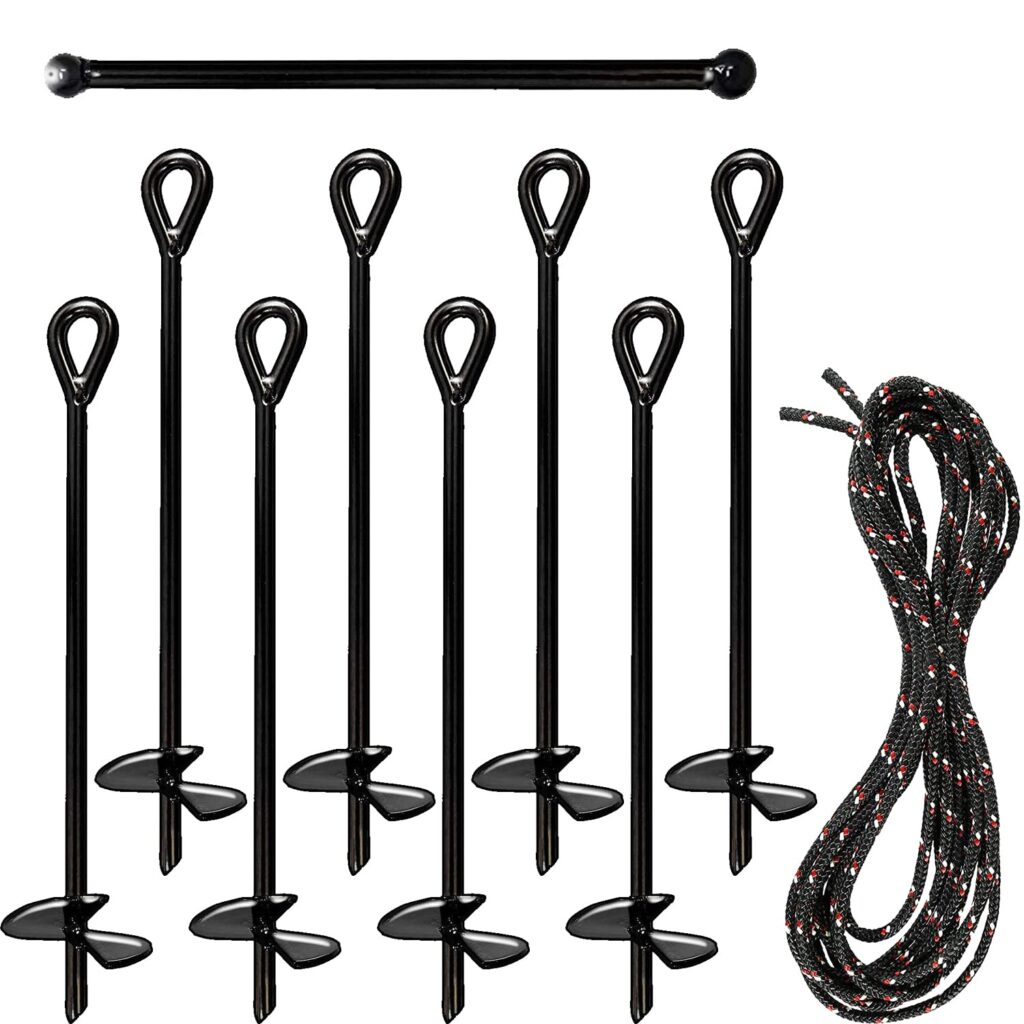
- Screw anchors – these are anchors that consists of a steel shaft with helical blades that screw into the ground. These anchors work in areas with softer soils.
- Rock anchors – these work in rocky terrains and install by drilling into the rock and inserting the anchor rod.
- Deadman anchors – these consists of large plates buried under the ground at an angle away from the direction of pull.
- Cable anchors – these anchors consist of high-tensile steel cables anchored to the ground using various anchor types.
- Grouted anchors – these are anchors which install by drilling a hole into the ground and filling it with cement. The anchor then inserts into the filled hole to provide stability.
- Driven anchors – these are anchors which pound into the ground using machinery or manual force.
- Expanding anchors – these anchors that work by engaging with the surrounding soil to create resistance against pullout forces.
Applications of ground anchors
Ground anchors find use in industries and construction projects that require stable anchorage. The ground anchors are adaptable which make them valuable in civil engineering, construction and geotechnical applications. the following are the common application areas of ground anchors.
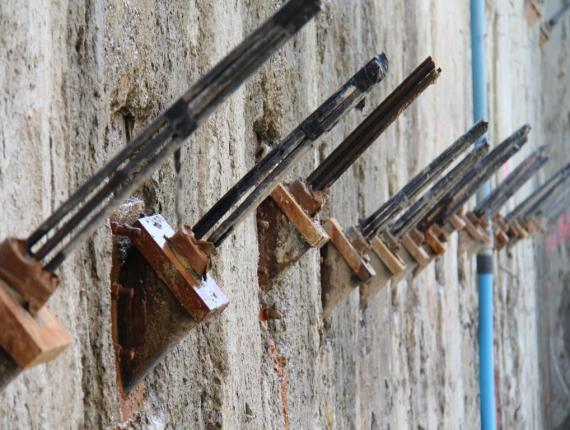
- Overhead transmission lines –they secure transmission towers and provide additional stability in areas with challenging terrains.
- Slope stabilization – they help to stabilize slopes and prevent soil erosion and landslides in hilly regions.
- Foundation support – ground anchors provide extra support to foundations in areas with soft soils.
- Guyed wind turbines – they also support the guy wires used for tall wind turbines. This ensures stability and safe operation.
- Marine applications – ground anchors help to secure boats and ships to the sea floor.
- Communication towers – the anchors support guy wires for tall communication towers. This is to ensure their stability and safety.
- Retaining walls – the anchors also help to support and stabilize retaining walls. This prevents lateral movement and maintain the integrity of the structure.
- Masts and antennas – they also help to secure masts and antennas for various applications.
Installation of a guy anchor
During installation, proper depth and tensioning of the guy wires with earth anchors ensures safety and stability of tall structures. Thes structures inlude wind turbines and overhead transmission lines. This installation should be by professionals experienced with the specific type of ground anchor. The following is a basic installation procedure for the ground anchors.
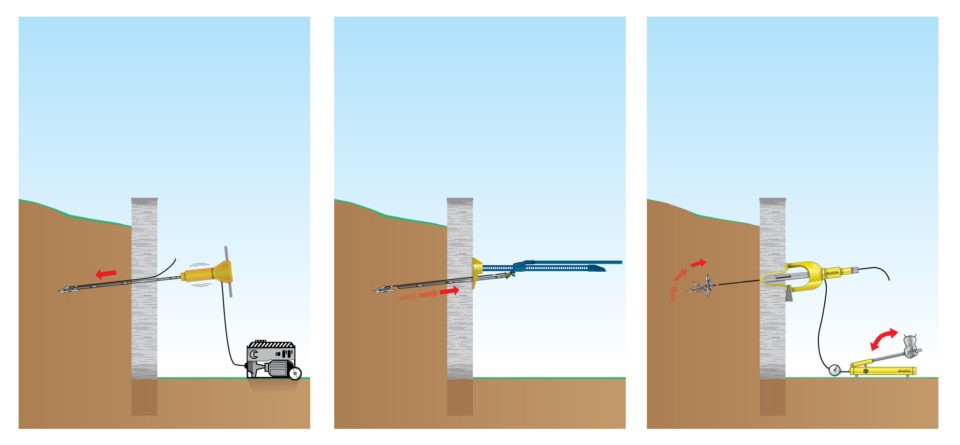
- Conduct site investigation to assess the soil conditions to determine the suitable types and size of ground anchors to use.
- Prepare the installation site by clearing any obstacles that may interfere with the installation and performance of the anchors.
- Drill the holes into the ground at specified locations and depths to allow for adhesive to fill the gaps.
- Insert the ground anchor carefully into the drilled hole.
- For grouted anchors, fill the drilled hole with adhesive before inserting the anchor. This ensures a string bond between the anchor and the surrounding soil.
- Attach the guy wires if necessary to the anchor heads. This is in applications such as transmission towers or communication masts.
- Tension the guy wires to the specified level for required support and stability.
- Test and inspect the ground anchors to ensure they meet the design specifications.
Selecting the best guy anchors
When selecting ground anchors consider the load requirements and soil conditions to determine the most suitable type. This may include selecting driven anchors for rocky terrain or screw anchors for softer soils. Additionally, it is advisable to consult with industry professionals for guidance on the best guy anchors for your specific needs. The following are the key factors to consider when selecting guy anchors.
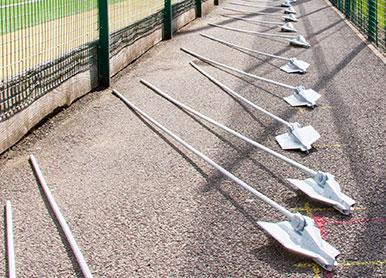
- Evaluate the soil type and characteristics at the installation site to select the best suited anchors.
- Consider the ease of installation for the chosen ground anchor as some may require specialized equipment and skills.
- Determine the depth of the anchor based on the load requirements and soil conditions.
- Compare the costs of different anchor types and consider overall cost effectiveness of the selected anchor.
- Assess the maintenance needs of the anchor including inspection frequency and any required maintenance procedures.
- Determine the load requirements of the structure or system that the ground anchor will support.
- Ensure that the selected ground anchor has sufficient capacity to provide the required stability and support for the structure.
- Ensure the selected ground anchor complies with the safety standards and building codes relevant to the specific application.
- Research the performance and track record for the chosen anchor and choose from a reputable manufacturer.
Frequently asked questions
What is a ground anchor?
A ground anchor is a device used in the construction and stability of overhead transmission lines and other tall structures. It provides strong support and secure the transmission towers to the ground.
What are the advantages of ground anchors?
Ground anchors offer several benefits that make them a valuable solution for various applications. these include stability and support, cost effectiveness, ease of installation, space efficiency, increased load capacity, improved safety, reduced excavation, proven performance and flexibility in design.
What are the limitations of ground anchors?
Ground anchors are a valuable solution for construction challenges but they have various limitations. These include depth limits, proximity to utilities, limited load capacity, long-term settlement, corrosion and degradation, environmental conditions, soil suitability and limited reusability. Consider these factors before selecting ground anchors for your application.
